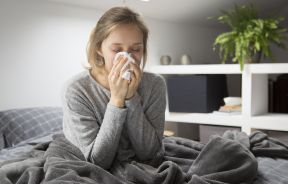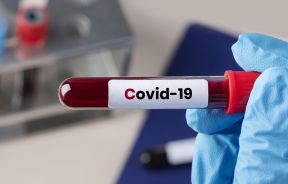9 Toxic Chemicals Found In Furniture: Is Your Home A Hazard Zone?

In the article, "Twelve Highly Toxic Chemicals to Banish from Your Home," Natural News reports on chemicals commonly found around the house that could cause health problems. In particular, several of the chemicals listed there may easily be inside or end up on your furniture where you (as well as your children, friends, and family members) are most likely to ingest them.
For instance, although they are most commonly found in air freshners, phthalates are also an ingredient in vinyl, wood varnishes, and lacquers. Although the Centers for Disease Control and Prevention (CDC) asserts that more research is needed to assess the human health effects of exposure to phthalates, some types of phthalates have affected the reproductive system of laboratory animals. Meanwhile, phthalate exposure is already widespread in the population. CDC researchers found measurable levels of many phthalate metabolites in the general population, and that adult women have higher levels of urinary metabolites than men for those phthalates that are used in soaps, shampoos, cosmetics, and other personal care products.
Volatile organic compounds (VOCs), according to the Environmental Protection Agency (EPA), are emitted as gases from certain solids or liquids. In fact, they may be emitted by a wide array of products, including paints and lacquers, paint strippers, cleaning supplies, household products such as varnishes and wax, cleaning and disinfecting, products, building materials (plywood and particleboard) and furnishings, office equipment such as copiers and printers, carbonless copy paper, graphics and craft materials including glues and adhesives. VOCs can cause eye, nose, and throat irritation as well as headaches, loss of coordination, and nausea. They may also cause damage to the liver, kidney, and central nervous system. Some are suspected or known to cause cancer in humans.
Used as flame retardants, polybrominated diphenyl ethers (PBDEs) are not chemically bound to plastics, foam, fabrics, or other products in which they are used, so this means they are more likely to leach out of them. PBDEs include pentabromodiphenyl ether (c-pentaBDE), octabromodiphenyl ether (c-octaBDE), and decabromodiphenyl ether (c-decaBDE). The EPA is concerned that certain PBDEs may be toxic to both the environment and humans. “Exposure to PBDEs in the womb and through nursing has caused thyroid effects and neurobehavioral alterations in newborn animals, but not birth defects. It is not known if PBDEs can cause birth defects in children,” the CDC reports.
Perfluorinated compounds (PFCs) are used in stain-resistant fabrics often included in furniture as well as in non-stick cookware like Teflon. Some researchers believe PFCs may cause birth defects and cancer; studies of laboratory animals given large amounts of PFCs show that these compounds affect growth and development, reproduction, and function of the liver. Studies have linked exposure before birth to lower birth weight in both animal and human studies.
Perchloroethylene (PCE) is most commonly used in the dry cleaning process, yet textile mills — makers of rubber coatings — also use this chemical. This chemical may be added to aerosol formulations, solvent soaps, adhesives, sealants, furniture polishes, and lubricants. Short-term exposure, the EPA states, can cause dizziness and unconsciousness; long-term exposure can cause liver and kidney damage, memory loss, confusion, and even cancer. PCE has been banned in Canada and Europe.
Formaldehyde, although it is a known carcinogen, is used in carpentry, soaps, detergents, cabinetrym and glues. The National Cancer Institute states that research links formaldehyde exposure to several cancers, including nasopharyngeal cancer and leukemia.
Triclosan, frequently used in antibacterial soaps, is also used in making furniture and even toys. Although the Food and Drug Administration (FDA) states on its website that “animal studies have shown that triclosan alters hormone regulation,” the agency also notes that such data does not always predict effects in humans. In short, the FDA is reviewing all of the available safety and effectiveness data in order to evaluate triclosan.
Finally, chlorine and ammonia, perhaps the most commonly used chemicals in homes across the nation, end the list provided by Natural News. Ammonia is commonly found in glass cleaners and, as such, may be used on furniture. Chlorine is used to bleach wood pulp and remove mold. The main effects of extended long-term exposure to chlorine gas include diseases of the lung and tooth corrosion. Exposure to high levels of ammonia in air may be irritating to your skin, eyes, throat, and lungs, and cause coughing and burns. Lung damage and death may occur after exposure to very high concentrations of ammonia.



























